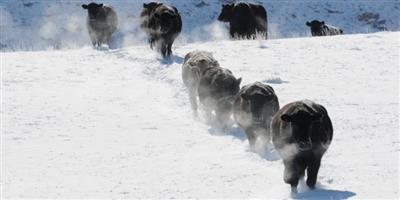This weekend will mark 20 years since the announcement of the first case of BSE, or Mad Cow Disease in the U.S.
Nearly every cattleman around can tell you where they were when they first heard about the cow that stole Christmas. Following the announcement, the U.S. beef industry spun into unprecedented turmoil during the holidays.
It was all because one Holstein cow from Washington State tested positive for BSE, two days before Christmas. The cow had been born in Canada but had been in a Washington dairy herd for many years before being sent to slaughter.
The global beef industry was already on high alert prior to that case because the United Kingdom had been rocked by BSE nearly a decade earlier. In May of 2003, the first BSE case arrived in Canada, making it a much more serious issue for the U.S. beef industry.
The impacts of that discovery included immediate trade restrictions by more than 30 countries including some of our top beef export markets. It took more than 15 years for U.S. beef exports to Japan to fully recover.
In one year, U.S. beef exports fell from 2.5 billion pounds to less than 500 million pounds and didn’t get back to pre-2004 levels until 2010. By the end of 2013, all those countries that had closed their borders to U.S. beef were finally opened back up.
USDA Animal and Plant Health Inspection Service Administrator Kevin Shea says safeguards are now in place to minimize the risk. “In the 1980’s there were as many as 30,000 cases per year around the world. Now, there are fewer than ten around the world.”
Shea said the silver bullet in the worldwide fight against BSE came by determining that feeding cattle byproducts to cattle essentially spread the disease.
“So, most every country in the world put in a ban against doing that,” Shea said. “Another set of safeguards in place is to make sure that the parts of the animal that can contain BSE, which is mostly brain material, spinal cord material, we in the United States remove specified risk materials from the carcasses of cattle brought into slaughterhouses. We also do lots of surveillance and we’ve tested millions of cattle over the years to see if there are any signs of BSE anywhere.”
20 years later since that Grinch of a cow was found, U.S. ranchers are still faced with numerous challenges. But beef demand and exports are historically high and calf prices at or near record levels. Consumers around the world love U.S. beef and can trust in the health and safety of the product.
###
USDA/Northern Ag Network


